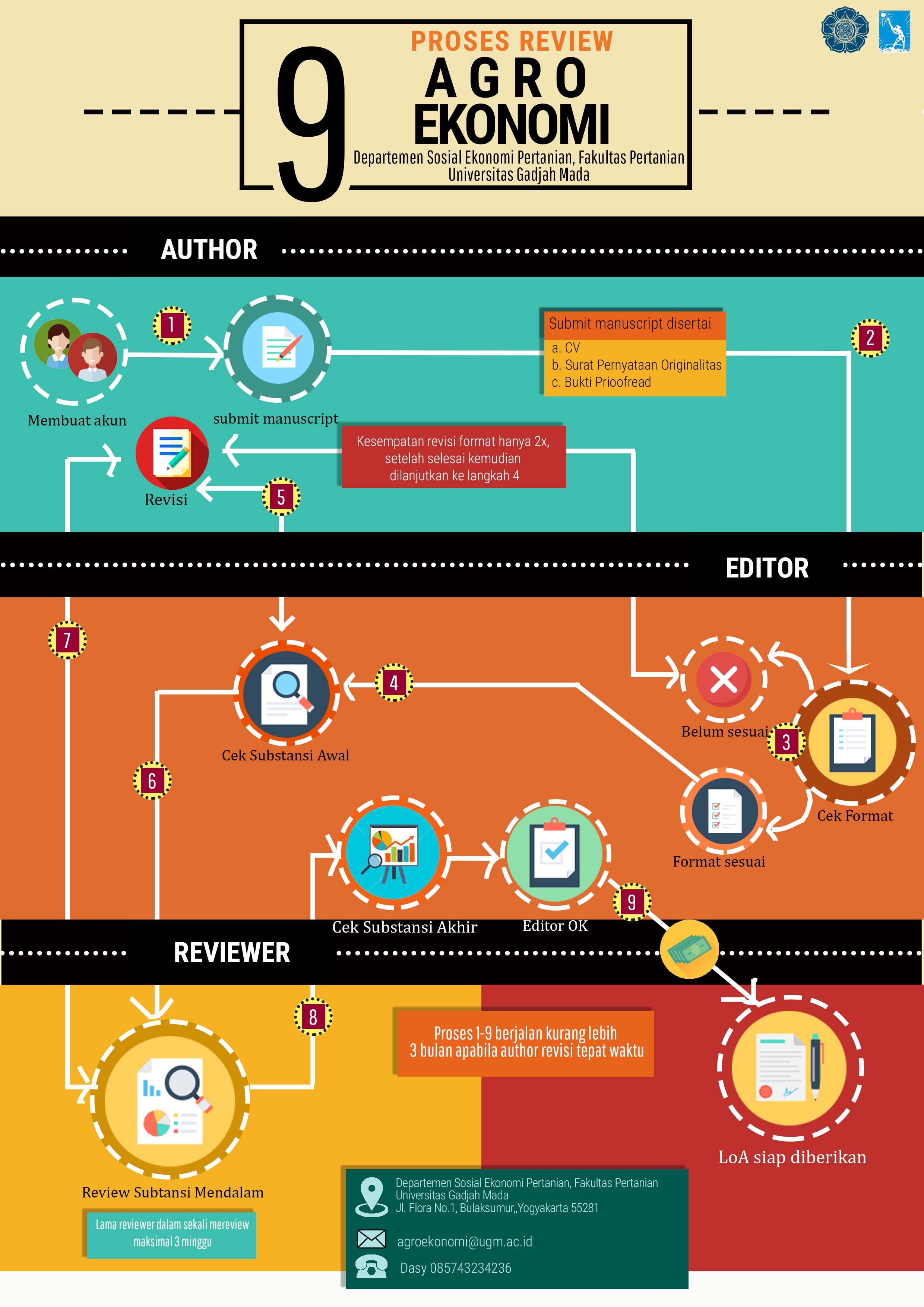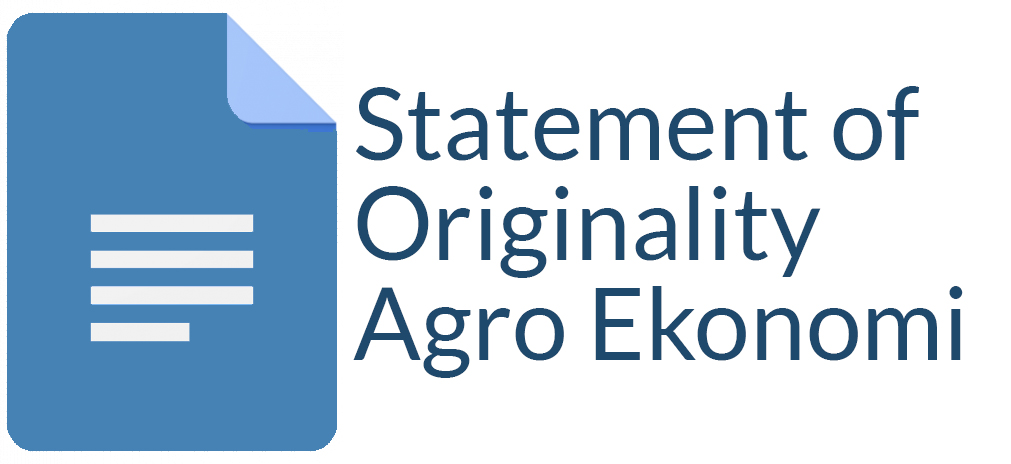Analysis of Object and Attractiveness of Community-Based Ecotourism in Coastal Area of Mempawah Regency
Eva Dolorosa(1*), Dewi Kurniati(2)
(1) Magister Agribisnis Fakultas Pertanian Universitas Tanjungpura
(2) Magister Agribisnis Fakultas Pertanian Universitas Tanjungpura
(*) Corresponding Author
Abstract
Mangrove ecotourism in the Mempawah coastal area began to be developed and initiated by local communities who are concerned in the sustainability of the mangrove ecosystem. This is also supported by the increasing number of tourists to visit ecotourism, so that the development of ecotourism needs to be supported by tourist attractiveness as well as learning to tourists to care about their environment in accordance with the principles of ecotourism namely responsible travel to natural areas, conserving the environment and improving the well-being of local people. This paper focuses on analyzing the potential value of community-based ecotourism objects and its attractiveness. The assessment indicator based on the guidelines for assessment of natural tourism attractiveness was used to assess the objects and attractiveness in three specific ecotourism locations which are managed by local communities in Mempawah, namely Pasir, Bakau, and Mendalok Village. This study involves the participation of tourists who have visited the ecotourism site. The study found that the potential value of the object and attractiveness mangrove ecotourism in Mempawah Area was 3,105 with an average score of 388 meaning that it ispotentially developed, and also increasing recommendations related to community-based ecotourism development.
Keywords
Full Text:
PDFReferences
Ahmad, A. M. (2012). Attractiveness Factors Influencing Shoppers Satisfaction, Loyalty, and Word of Mouth: An Empirical Investigation of Saudi Arabia Shopping Malls. International Journal of Business Administration, 3(6), 101-112.
Becken, S. (2010). The Importance of Climate and Weather for Tourism. Land Environment & People.
BPS Kabupaten Mempawah. (2017). Kabupaten Mempawah Dalam Angka. Badan Pusat Statistik Kabupaten Mempawah.
Campo, S., & Alvarez, M. D. (2014). Can Tourism Promotions Influence A Country's Negative Image? An Experimental Study On Israel's Image. Current Issues in Tourism, 17(3), 201-219.
Dorobantu, M. R., & Nistoreanu, P. (2012). Rural Tourism and Ecotourism-the Main Priorities in Sustainable Development Orientations of Rural Local Communities in Romania. Economy Transdisciplinary Cognition, XV(1), 259-266.
Ecolab. (2012, March). Water Security: Technological Innovations & Community Benefits. Presentation at EarthCheck’s Inner Circle Forum. Singapore.
Henkel, R., Henkel, P., Agrusa, W., & Tanner, J. (2006). Thailand as A Tourist Destination: GGGGGVisitors and Thai Residents. Asia Pacific Journal of Tourism Research, 11(3), 269–287.
Jin, X. K. (2012). Impact of Cluster on Exhibition Destination Attractiveness: Evidence from Mainland China. Tourism Management, 33(6), 1429-1439.
Khairudin, B. F. (2016). Degradation Mangrove by Using Landsat 5 TM and Landsat 8 OLI Image in Mempawah Regency, West Kalimantan Province year 1989 – 2014. Procedia Environmental Sciences, 460-464.
Kim, J., Ritchie, J., & McCormick, B. (2012). Development of a scale to measure memorable tourism experiences. Journal of Travel Research, 51(1), 12–25.
Ko, P. F., & Liu, Y. L. (2011). A Visitor-Focused Study of Tourism Attraction in Taiwan: Empirical Evidence from Outbound Chinese Tourists. Journal of Hospitality Management and Tourism, 2(2), 22-33.
Marzuki, A., Hussin, A. A., Badaruddin, M., Othman, A. G., & Som, A. P. (2011). Assesment of Nature-Based Tourism in South Kelantan, Malaysia. TOURISMOS: An International Multidisciplinary Journal Of Tourism, 6(1), 281-295.
Mbaiwa, J. E. (2011). The Effects of Tourism Development on The Sustainable Utilisation of Natural Resources in The Okavango Delta, Botswana. Current Issues in Tourism, 14(3), 251–273.
Nistoreanu, P., Dorobantu, M. R., & Tuclea, C. E. (2011). The Trilateral Relationship Ecotourism –Sustainable Tourism–Slow Travel Among Nature in the Line with Authentic Tourism Lovers. Journal of tourism, 11, 34-37.
Purwanto, s., Syaufina, L., & Gunawan, A. (2014). Kajian Potensi dan Daya Dukung Taman Wisata Alam Bukit Kelam Untuk Strategi Pengembangan Ekowisata. Jurnal pengelolaan Sumberdaya Alam dan Lingkungan, 4(2), 119-125.
Reitsamer, B., Brunner-Sperdin, A., & Stokburger-Sauer, N. E. (2016). Destination Attractiveness and Destination Attachment: The Mediating Role of Tourists’ Attitude. Tourism Management Perspectives, 19, 93-101.
Shwu-Ing, W., & Yu-Hua, Z. (2014). The Influence of Tourism Image and Activities Appeal on Tourist Loyalty – A Study of Tainan City in Taiwan. Journal of Management and Strategy, 5(4).
Siahaan, R. K., Rifanjani, S., & Siahaan, S. (2018). Penilaian Potensi Obyek Daya Tarik Wisata Alam (ODTWA) Kawasan Mangrove Setapuk Di Kelurahan Setapuk Besar Kecamatan Singkawang Utara Kota Singkawang. Jurnal Hutan Lestari, 6(1), 25 - 24.
Stone, M. T. (2015). Community-Based Ecotourism: A Collaborative Partnerships Perspective. Journal of Ecotourism Volume 14, 166-184.
Weaver, D. (2008). Ecotourism. John Wiley & Sons Australia, Ltd.
World Health Organization. (2009). Health Risks and Precautions: General Considerations. International Travel and Health. World Health Organization.
Zambrano, A., Almeyda, B., Eben, N., & Durham, W. H. (2010). Social and Environmental Effects of Ecotourism in The Osa Peninsula of Costa Rica: the Lapa Rios case. Journal of Ecotourism, 9(1), 62-83.
Article Metrics
Refbacks
- There are currently no refbacks.
Copyright (c) 2018 Agro Ekonomi

This work is licensed under a Creative Commons Attribution-ShareAlike 4.0 International License.
View My Stats












